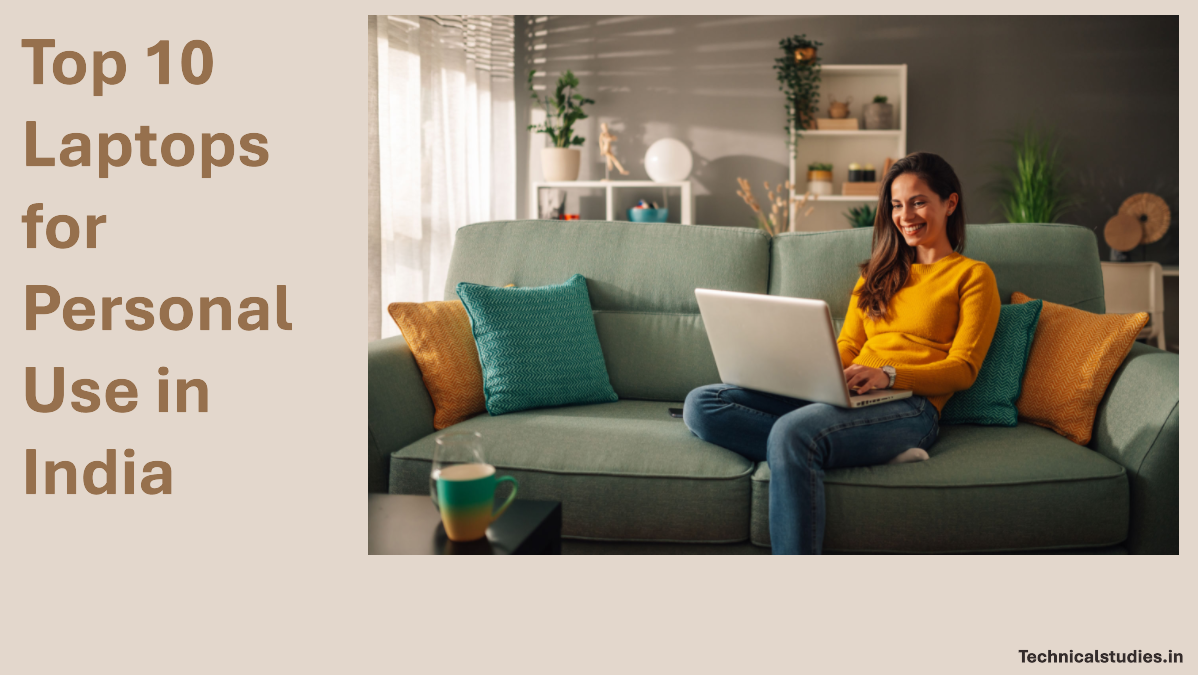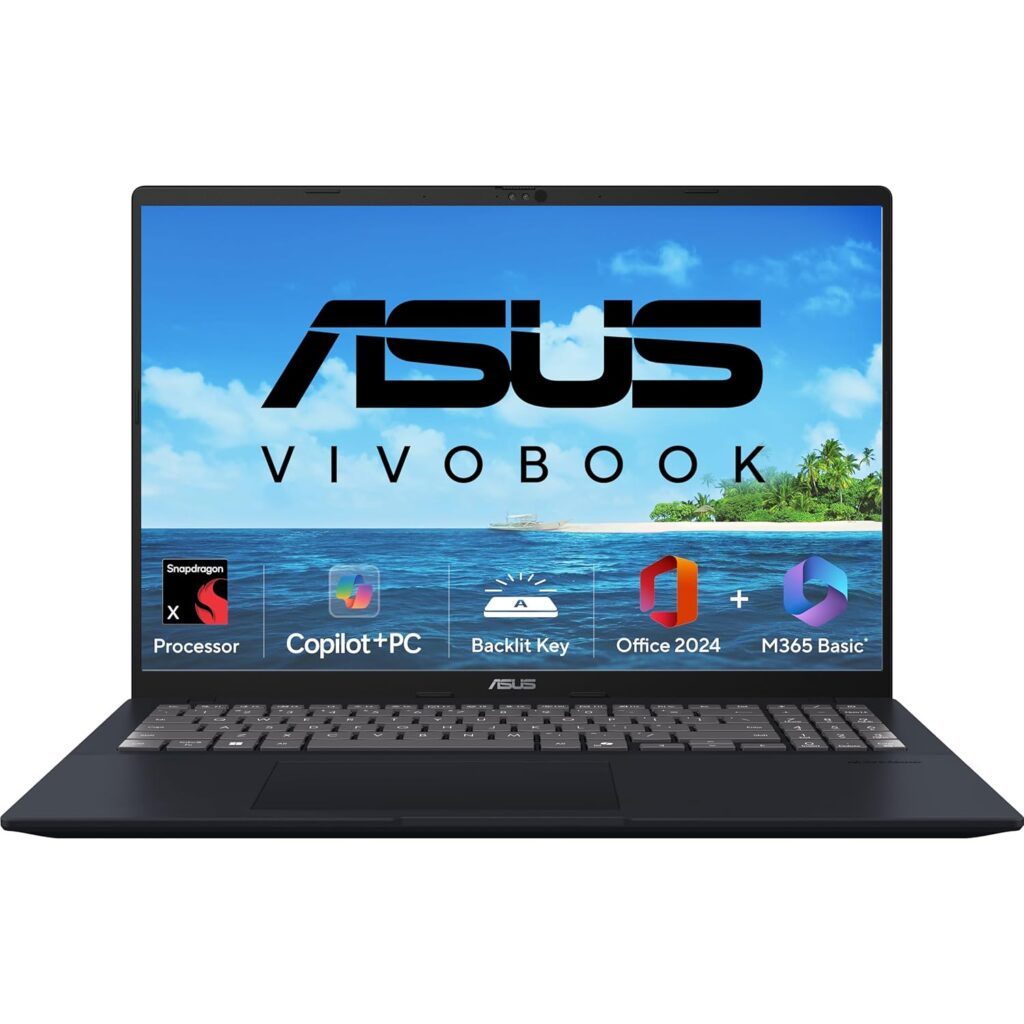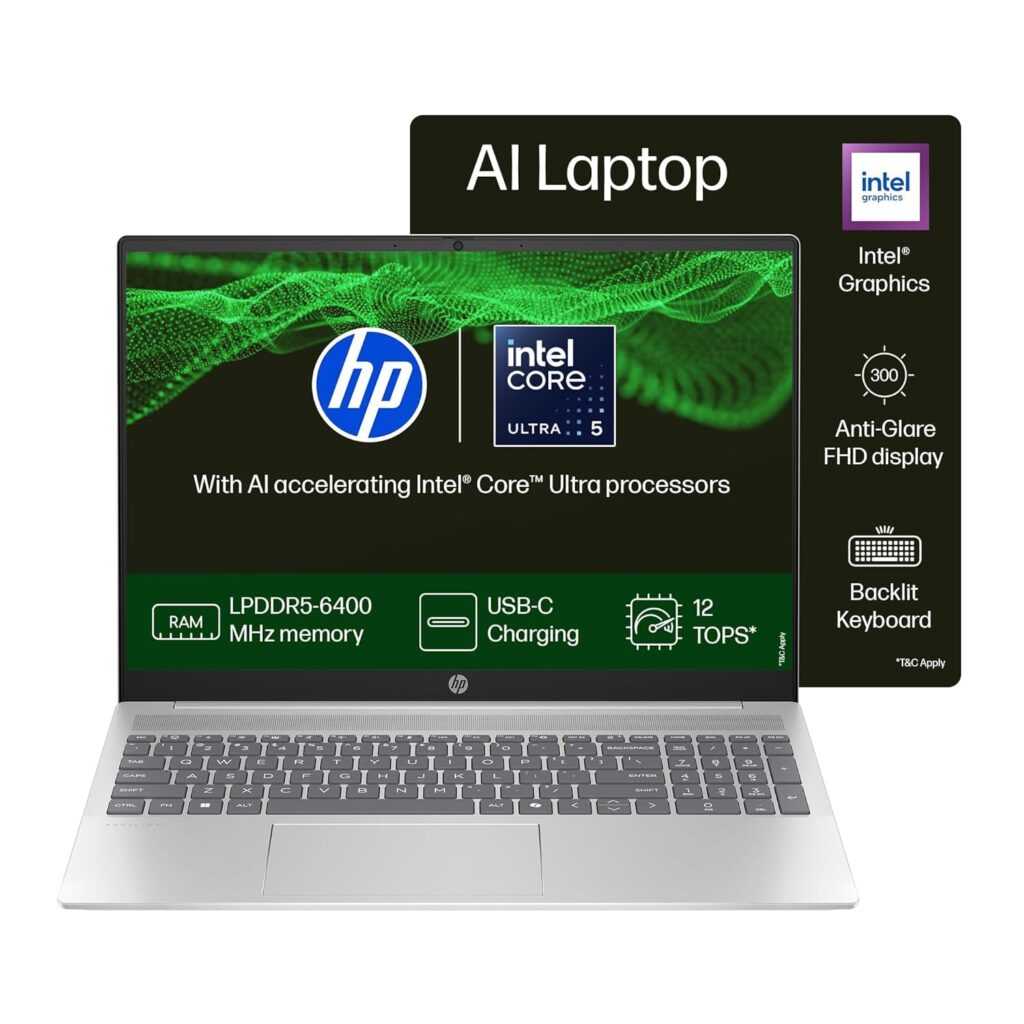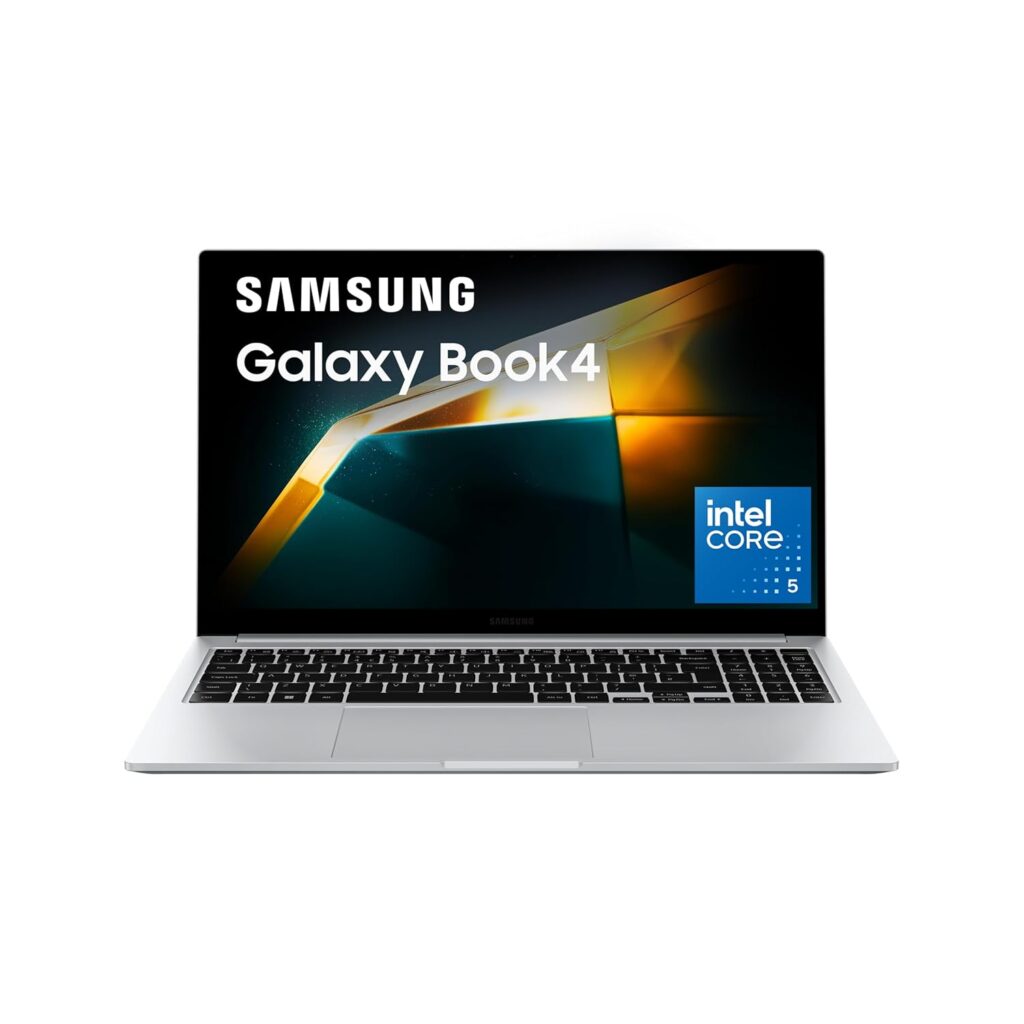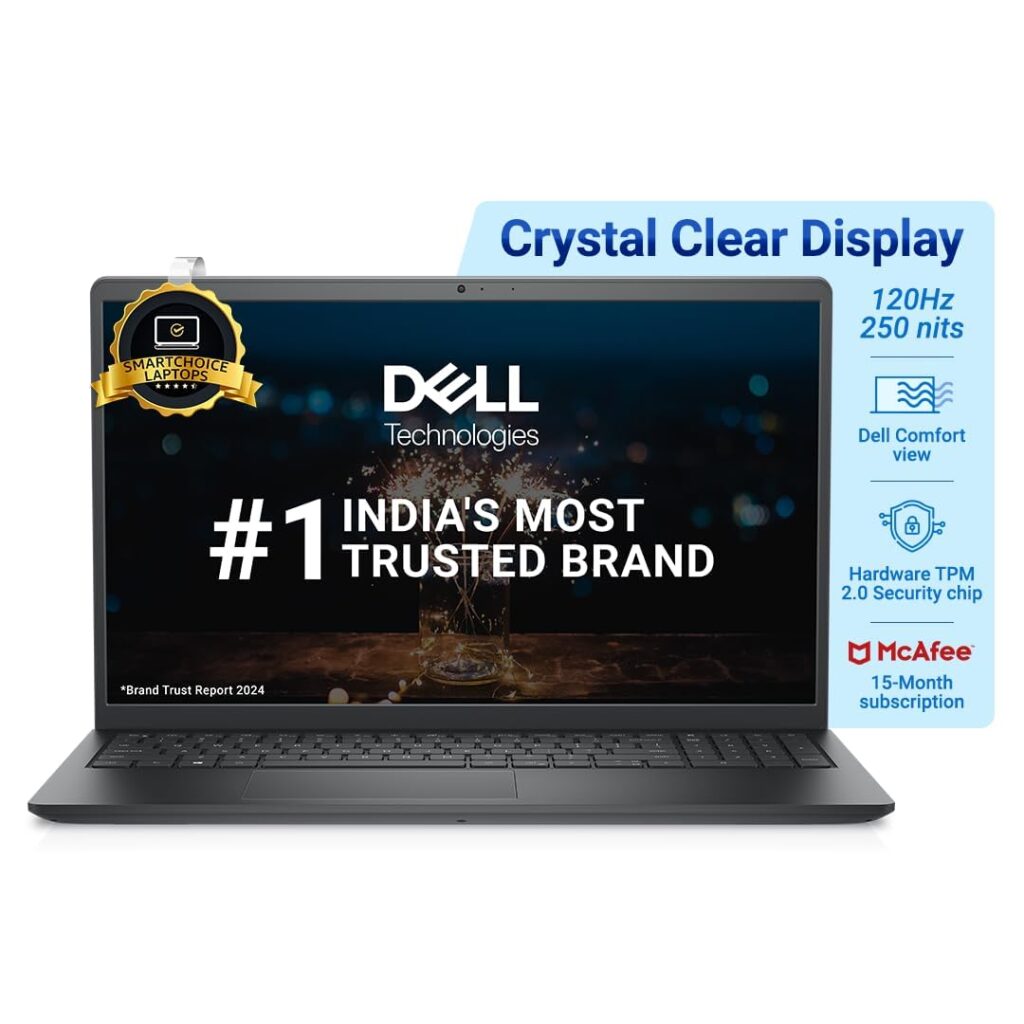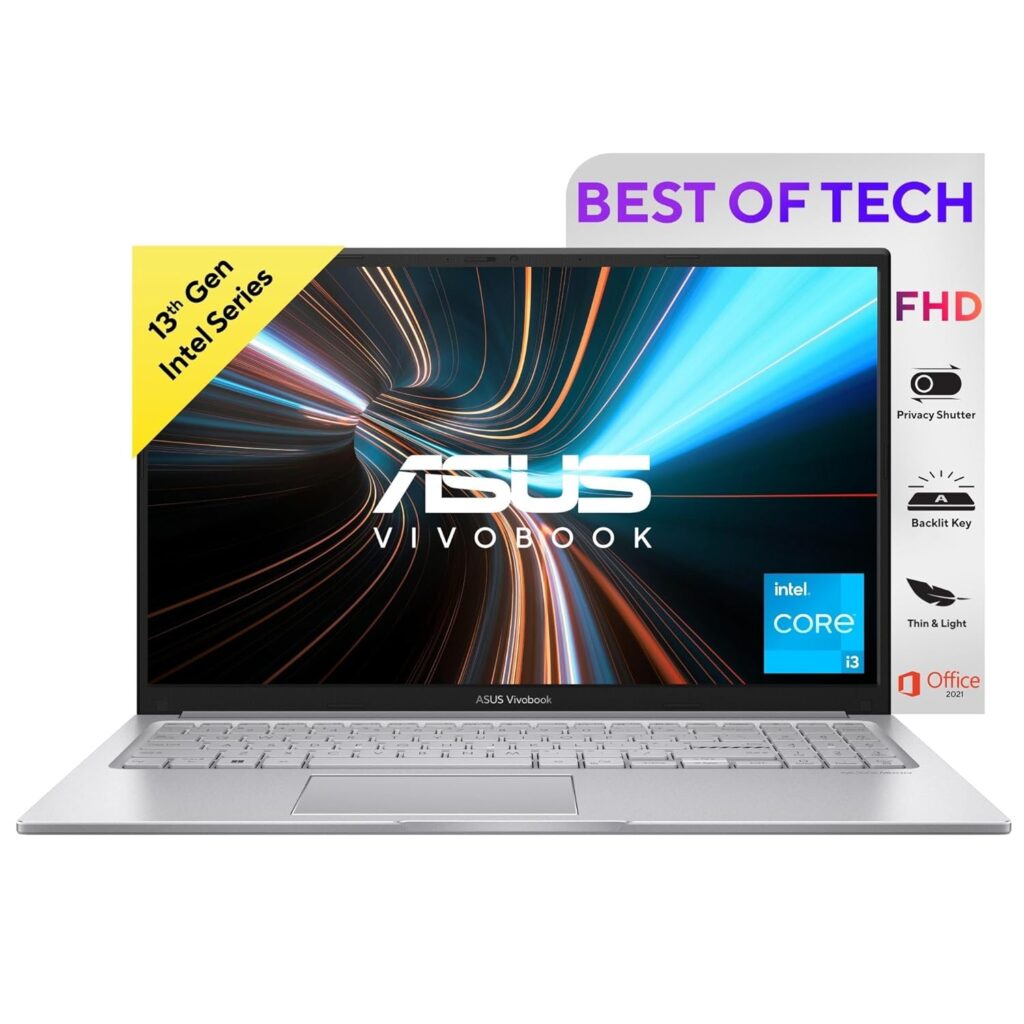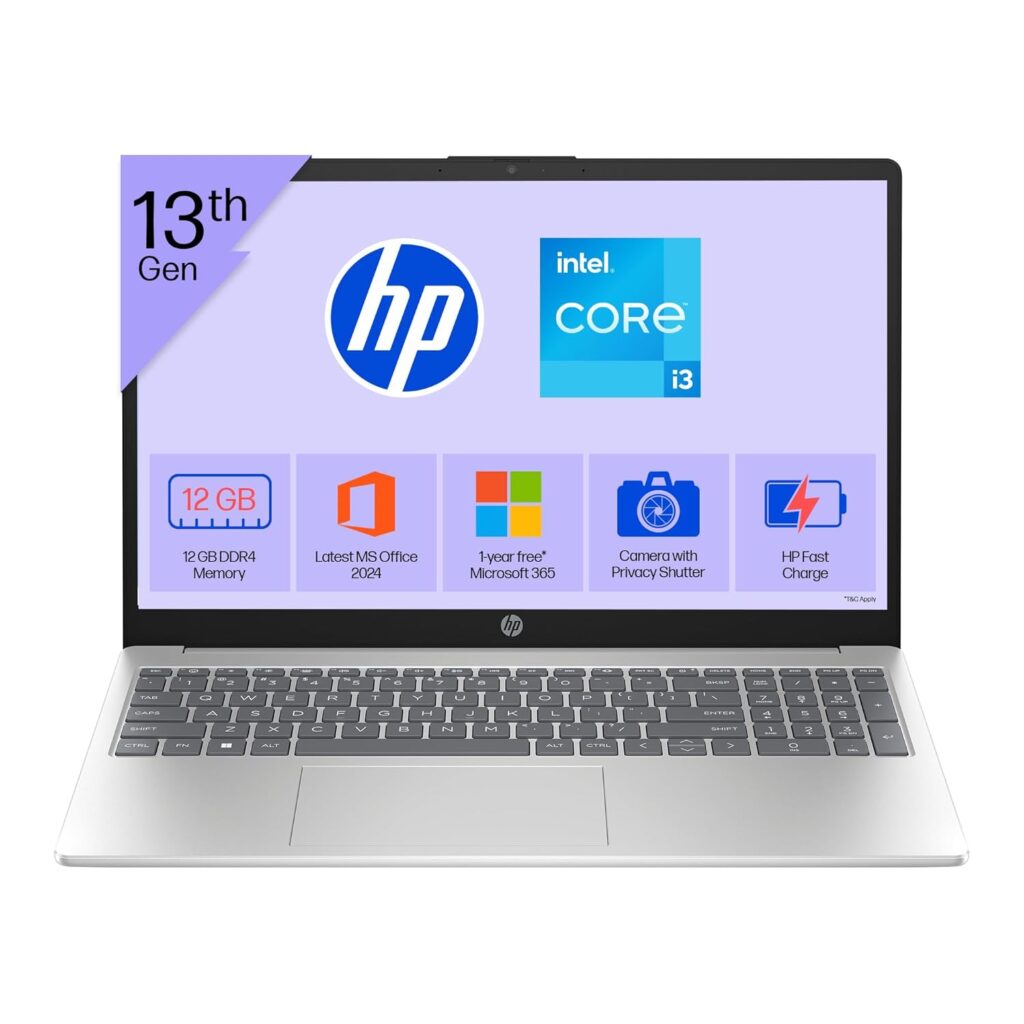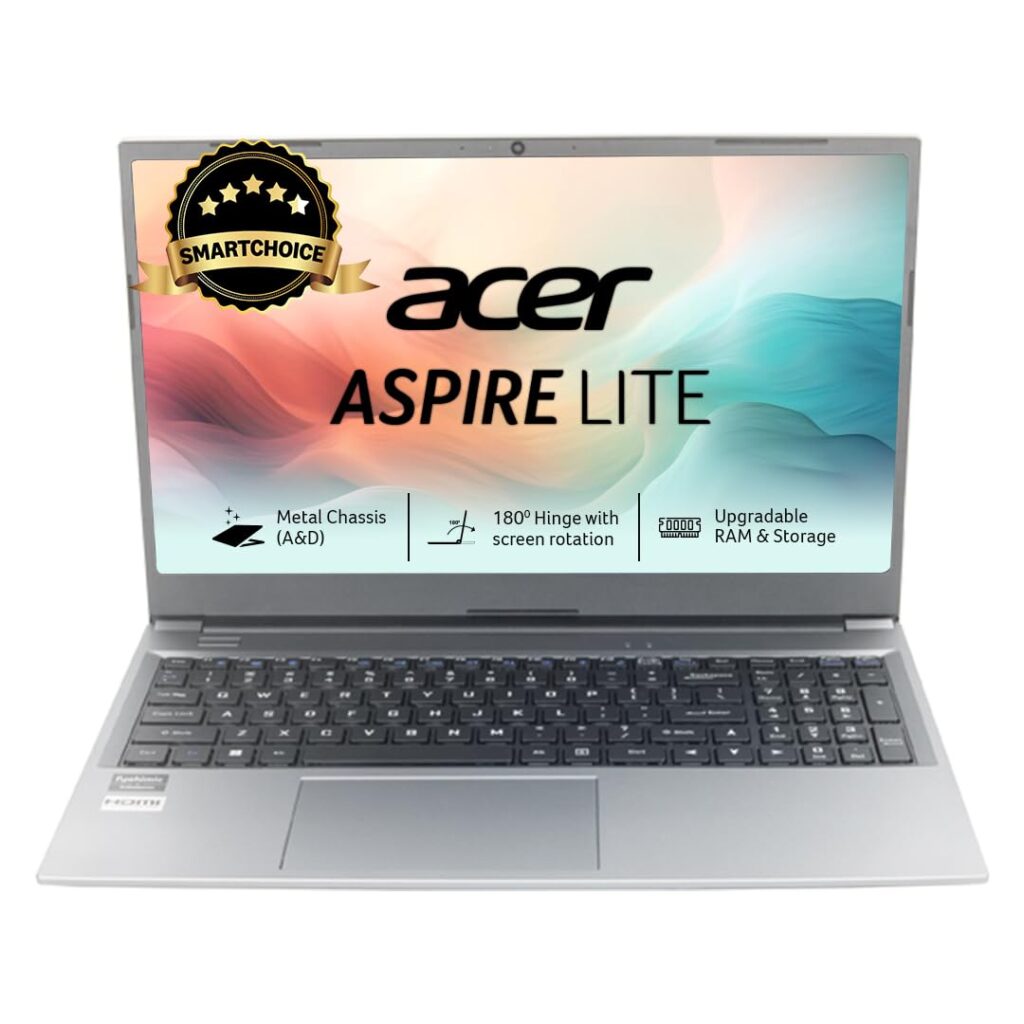Last updated on October 27th, 2025 at 12:24 pm
A laptop is more than just a gadget in the connected world of today; it’s your everyday partner. Your laptop plays a silent but vital role in your life, whether you’re using it to manage household budgeting in Excel, watch Netflix after work, talk on Zoom with relatives, or assist your child with their schoolwork.
The problem is that there is no one-size-fits-all solution for personal use laptops. They must find a delicate balance between portability, cost, and performance. You want a device that is light enough to carry around the house, quick enough to run Microsoft Office and open numerous tabs, and reasonably priced for daily work without wasting money on power you won’t use.
So who is this guide for?
✅ Students looking for a reliable study partner
✅ Home users juggling online shopping, bill payments, and streaming
✅ Retirees exploring the digital world or video calling loved ones
✅ Casual professionals who don’t need workstation-grade specs
✅ And anyone who simply wants a no-fuss, quality laptop that just works
What You’ll Find in This Article
In this curated list of the Top 10 Laptops for Personal Use in India, we’ve:
- Handpicked models that excel in real-world usage
- Balanced performance, battery life, and comfort
- Considered factors like budget, display quality, and portability
- Included both Windows and Chromebook options to suit different needs
Research supports each laptop option, along with clear benefits and drawbacks, and a brief real-world example to help you visualize how it will fit into your daily routine.
Thus, let’s get started and locate the ideal laptop for you, not the one with the most impressive specifications, but the one that seems to have been designed with your daily life in mind.
How to Choose a Laptop for Personal Use (A Simple Buyer’s Guide)
Purchasing a laptop for personal use doesn’t have to be intimidating, particularly if you’re not tech-savvy. The objective is straightforward: select a gadget that simplifies, not complicates, your everyday digital life, whether it’s your first laptop or a much-needed replacement.
Here is a brief and easy guide to help you understand what really matters before we go into the best models.
1. Processor (The Brain of Your Laptop)
Consider your laptop’s processor to be its engine. For everyday commuting, a reliable vehicle is more important than a racecar.
AMD Ryzen 3 or Ryzen 5 or Intel Core i3 or i5 are the best options for personal use.
These chips are quick enough for online learning, YouTube, Netflix, Microsoft Office, surfing, and even some light photo editing.
Real Also: What Makes a Laptop Really Fast? – CPU, GPU, RAM, or Storage
2. RAM (How Many Tasks It Can Handle)
Multitasking runs more smoothly with more RAM.
8GB is the sweet spot because it allows you to run programs like Zoom, Excel, and Chrome without freezing and switching between tabs.
For very light tasks, 4GB might be sufficient, but it’s limiting these days.
Although 16GB is excellent, it’s frequently too much for personal use and is more expensive.
Read Also: How Much RAM Do You Really Need in a Laptop Today? A Practical Guide for Every User
3. SSD vs HDD (Speed You Can Feel)
This is going to transform the game.
Laptops with SSDs (Solid State Drives) seem incredibly snappy, boot up faster, and open software more quickly.
Unless you require a ton of inexpensive storage, HDDs are slower and more antiquated.
If at all feasible, choose an SSD with at least 256GB; it’s well worth the investment.
4. Display Quality (Your Daily Window)
Make sure it’s gentle on your eyes because you’ll be staring at it for hours.
Make sure the resolution is Full HD (1920×1080).
Check the brightness and color quality as well if you read for extended periods of time or stream frequently.
Using anti-glare screens during the day is easy on the eyes.
5. Battery Life (Freedom to Move)
You don’t want to be plugged in all the time, right?
- Aim for 6+ hours of battery life for casual use.
- For students or travelers, 8–10 hours is a sweet deal.
6. Build Quality & Portability (Especially If You Move Around)
If you want to carry your laptop around the house or to a cafe, it should be lightweight (less than 1.7 kg).
Robust and well-constructed (avoid fragile builds; plastic is acceptable).
Examine reviews for keyboard comfort and hinge quality as well.
7. Operating System (What You’re Comfortable With)
- Windows is versatile, familiar, and great for all-around use
- macOS (MacBook) is premium, smooth, and great if you’re already in the Apple ecosystem
- ChromeOS is super simple, fast, and ideal for browsing, docs, and video calls — but not for heavy apps.
8. Budget Brackets (Set It Before You Regret It)
We’ve broken our list into three rough pricing tiers:
- Under ₹40,000 – Great for students, light users, and first-time buyers
- ₹40,000–₹60,000 – Best balance of power, build, and features for most people
- Premium (₹60,000+) – Sleek design, strong performance, and long-term reliability
List of Top 10 Laptops For Personal Use In India
1. Lenovo Smartchoice IdeaPad Slim 3
Quick Summary
- CPU: Intel Core i7‑13620H (10‑core, up to 4.9 GHz)
- RAM: 16 GB DDR5 (8 GB soldered + 8 GB expandable, up to 24 GB)
- Storage: 512 GB SSD (PCIe 4.0, upgradable)
- Display: 15.3″ WUXGA IPS, 300 nits, anti‑glare, TÜV Low Blue Light
- Battery: 50 Wh, up to ~14.5 hrs video playback, Rapid Charge
- Build: 1.59 kg, MIL‑STD‑810H rated, backlit keyboard
- Ideal for: Students & professionals needing smooth multitasking, light creative work, all-day portability
See Web Story: Lenovo SmartChoice Ideapad Slim 3
Overview
Imagine having a laptop that can keep up with your busiest days, from Netflix marathons to early-morning projects. With its potent 13th-generation Intel i7 processor and dynamic DDR5 memory, that’s the Lenovo IdeaPad Slim 3.
Lenovo truly considered your everyday life with features like the privacy-shutter camera and backlit keyboard, and the nearly borderless 15.3″ IPS screen feels immersive for both work and play.
It is also resilient; its MIL-STD-810H toughness ensures that it is prepared for any bumps that may occur. For those “just five more minutes” occasions, its Rapid Charge feature allows you to get two hours of battery life in just fifteen minutes.
A stylish, portable powerhouse that can tackle anything you throw at it without making a sound.
Pros
- Powerful 13th‑gen i7 + DDR5 RAM delivers smooth multitasking and app-switching
- Lightweight, premium build with a backlit keyboard and full connectivity
- IPS display with lower blue light and anti-glare coating protects your eyes
- Excellent battery life (~14.5 hrs video playback) and Rapid Charge support
- Pre-loaded Office 2024 + 3-month Xbox Game Pass adds value right out of the box
Cons
- Slightly pricey for integrated graphics
- USB-C supports DisplayPort, but no Thunderbolt 4
2. ASUS Vivobook 16
Quick Summary
- CPU: Qualcomm Snapdragon X1‑26‑100 (8‑core Arm chip with 45 TOPS NPU)
- RAM: 16 GB LPDDR5X
- Storage: 512 GB PCIe 4.0 SSD
- Display: 16″ WUXGA (1920×1200) IPS-style, 60 Hz, 89% screen-to-body
- Battery: ~27 hrs claimed; 50% in 30 min charge
- Weight: 1.88 kg
- Ideal for: Students, remote workers & binge-watchers who prioritise battery life and efficiency
See Web Story: ASUS Vivobook 16
Overview
Imagine a laptop that charges quickly enough to continue using Netflix and online lectures for almost a whole day. With an amazing 27-hour battery life and quick-charge features (refueling 50% of the battery in 30 minutes), the ASUS Vivobook 16 with Snapdragon X checks all the boxes.
Additionally, it features a 512 GB SSD and 16 GB RAM, which guarantee seamless operation of Zoom calls, tabs, and office duties.
Its unibody form feels sturdy, and it’s comfortably multipurpose thanks to its broad port choices (USB-C, HDMI 2.1) and dependable backlit keyboard.
The compromises? The FHD+ panel isn’t the best for photo editors, and the screen is a little dim (approximately 300 nits). However, this Vivobook offers a great deal of durability and value for the majority of regular users in India.
Pros
- Exceptional battery life (~27 hrs) & fast charging (50% in 30 min)
- Arm-based Snapdragon delivers smooth efficiency and integrated AI features (Copilot+ PC)
- Solid build, backlit keyboard, IR webcam, and Wi‑Fi 6E — good for remote learning
- Plenty of ports: 2×USB‑A, 2×USB‑C (40 Gbps), HDMI 2.1
- 16 GB RAM + 512 GB SSD ensures snappy everyday performance
Cons
- 60 Hz IPS screen is dim (~280 nits) with a narrow colour gamut
- The screen is not suitable for creative work like photo/video editing
3. Dell Inspiron 3530 Laptop
Quick Summary
- CPU: Intel 13th Gen Core i5‑1334U (10 cores, up to 4.6 GHz)
- RAM: 16 GB DDR4
- Storage: 512 GB SSD (option for 1 TB variant)
- Display: 15.6″ FHD, 120 Hz, anti‑glare, 250 nits
- Battery & Weight: ~6–7 hrs typical use; 1.62 kg
- Ideal for: Students, home users & casual professionals wanting reliable everyday performance
See Web Story: Dell Inspiron 3530 Laptop – A Thin & Light Laptop for Office Work
Overview
Introducing the Dell Inspiron 3530, your trustworthy daily computing companion. It manages browsing, Microsoft Office, streaming, and video calls with ease thanks to its state-of-the-art Core i5-1334U processor and 16GB of RAM.
The fluid 120 Hz Full HD screen makes scrolling responsive and content viewing pleasurable. Quick program launches and startup times are guaranteed by the 512 GB SSD, and typing in low light is made easier by a full-size backlit keyboard.
With a weight of just 1.62 kg, it is both sleek and robust, making it convenient to carry around the house or across campus.
Dell also has a 1 TB SSD version if you need a little extra room; this is ideal if you have a lot of files to keep. An all-around option that seems ideal for your everyday schedule.
Pros
- Efficient Core i5 + 16 GB RAM handles multitasking smoothly
- Crisp 120 Hz FHD screen enhances everyday use
- Backlit keyboard with anti-glare display boosts comfort for typing & viewing sessions
- Lightweight and slim design (1.62 kg) makes it portable
- Options for 512 GB or 1 TB SSD
Cons
- 250 nits of brightness may struggle in bright sunlight
- USB-C port is data-only — no support for power delivery or display output
- Average battery (~6–7 hrs) — may need charging during heavy use
4. HP Pavilion 16
Quick Summary
- CPU: Intel Core Ultra 5 125U (12‑core, up to 4.3 GHz)
- RAM: 16 GB LPDDR5
- Storage: 1 TB PCIe SSD
- Display: 16″ WUXGA (1920×1200) IPS, 300 nits, anti‑glare
- Battery: 59 Wh (~11 hrs video playback, fast charge 50% in 30 min)
- Weight: 1.77 kg
- Ideal for: Home users, students & casual professionals seeking large-screen productivity with AI features
See Web Story: HP Pavilion 16 AI Laptop
Overview
Introducing the HP Pavilion 16 (af0056TU), a fantastic all-arounder that strikes a balance between comfort and daily performance. With 16GB LPDDR5 RAM and a 1TB SSD, the new Intel Core Ultra 5 CPU offers seamless multitasking and storage for photo libraries, movies, and projects.
A large 16-inch WUXGA anti-glare screen is ideal for office work, streaming videos, or binge-watching, and the new Ultra-series’ integrated AI improvements offer intelligent features and quick shortcuts.
It’s clever and useful, with a privacy webcam shutter and a sturdy, recycled aluminum top cover. It is dependable for days when you need to be on the go, thanks to its approximately 11-hour battery life and support for fast charging. This Pavilion is the perfect big-screen laptop for your everyday needs.
Pros
- Spacious 16″ WUXGA screen with anti-glare coating—great for work and entertainment
- Large 1 TB SSD with fast LPDDR5 RAM—quick load times and smooth multitasking
- Latest Intel Core Ultra 5 chip delivers modern performance with built-in AI boosts
- Good battery life (~11 hrs) with fast-charge support (50% in 30 minutes)
- Backlit keyboard, numeric keypad, full port selection including dual USB‑C with DisplayPort and USB Power Delivery
Cons
- Weighs 1.77 kg—slightly heavy for carrying all day
- FHD webcam quality is average; users report only “3GP-level” image in low light
5. Samsung Galaxy Book 4
Quick Summary
- CPU: Intel Core 5 120U (12th‑gen hybrid architecture)
- RAM: 16 GB LPDDR4X
- Storage: 512 GB SSD
- Display: 15.6″ Full HD IPS, anti‑glare
- Graphics: Intel Iris Xe
- Special Features: Fingerprint reader, RJ45 LAN, MS Office 2021 included
- Ideal for: Students, professionals, and families seeking a reliable, well-equipped daily workhorse
See Web Story: Samsung Galaxy Book4
Overview
For a variety of daily users, the Samsung Galaxy Book4 provides a comfortable balance between portability and performance. Its 12th-generation Intel Core 5 120U processor, 16GB of RAM, and quick SSD storage guarantee seamless operation of Microsoft Office, video chats, and tab-swiping in Chrome.
The fingerprint reader and illuminated keyboard add usability touches, while the 15.6-inch anti-glare display reduces strain when working on documents or binge-watching.
It comes pre-installed with a plethora of features, including Windows Home, Microsoft Office 2021, RJ45 LAN, and numerous USB ports.
With a weight of about 1.6 kg, it’s convenient to move from the sofa to the balcony at home or between campuses. A reliable all-around player who doesn’t overpromise but delivers when it matters most.
Pros
- Smooth daily performance with Core 5 120U + 16 GB RAM & SSD
- Includes MS Office 2021 and a fingerprint reader at purchase
- Anti-glare Full HD display eases long work/viewing sessions
- Offers RJ45 Ethernet port—rare at this price point
- Sleek build, lightweight at ~1.6 kg, easy to move around
Cons
- Battery life is not exceptional (no specific claims from Samsung)
- Samsung’s pre-installed software adds bloat
6. Dell 15 Thin & Light Laptop
Quick Summary
- CPU: 12th‑Gen Intel Core i5‑1235U (10 cores, up to 4.4 GHz)
- RAM: 16 GB DDR4
- Storage: 512 GB SSD
- Display: 15.6″ FHD IPS, 120 Hz, 250 nits
- Special Features: Backlit spill-resistant keyboard, MS Office 2021, 15‑month McAfee subscription
- Weight: ~1.69 kg
- Ideal for: Students and home users needing a solid, mainstream laptop for everyday productivity
See Web Story: Dell 15 Thin & Light Laptop
Overview
Built for everyday use, the Dell 15 Thin & Light (i5-1235U) is a dependable, straightforward laptop. Its 12th-generation Intel i5 processor and 16GB of RAM provide light multitasking, streaming, browser tabs, and responsive performance in Microsoft Office.
You will like the seamless feel of the spill-proof backlit keyboard and 120 Hz Full HD display—comfortable extras for late-night work or unintentional coffee spills.
A robust 512GB SSD provides speedy startup times and storage space, and Office 2021 and a 15-month McAfee membership come pre-installed, so you’re ready to use it immediately.
It is lightweight enough for professionals and students on the go, weighing slightly under 1.7 kg. All things considered, it’s a solid, well-rounded option for people who choose performance over extras.
Pros
- Smooth everyday performance with Core i5 + 16 GB RAM & SSD
- Leak‑resistant backlit keyboard adds durability for home use
- Full HD 120 Hz IPS screen delivers smoother scrolling and visuals
- Bundled MS Office 2021 and a 15-month McAfee subscription bring out-of-the-box value
- Lightweight and portable (~1.69 kg)—easy to carry
Cons
- Brightness limited to 250 nits—may underperform outdoors
- Plastic build feels less premium compared to metal alternatives
7. Lenovo ThinkBook 16
Quick Summary
- CPU: AMD Ryzen 5 7535HS (6 cores, up to 4.5 GHz)
- RAM: 16 GB DDR4
- Storage: 512 GB PCIe NVMe SSD
- Display: 16″ WUXGA IPS (1920×1200), 300 nits, anti‑glare
- Build & Features: Lightweight (~1.7 kg), aluminium top, backlit keyboard, fingerprint reader, Office 2024 included
- Ideal for: Students and professionals who want a spacious screen, reliable performance, and business-grade features at mid-range pricing
See Web Story: Lenovo ThinkBook 16
Overview
The Ryzen 5 7535HS-equipped Lenovo ThinkBook 16 combines elegance and power in a small package. Its vivid 16-inch WUXGA screen provides plenty of room for multitasking, spreadsheets, and video chats, and its aluminum top gives it a high-end appearance.
The Ryzen 5 HS series processor, which is backed by 16 GB of RAM and a speedy 512 GB SSD, guarantees seamless operation of productivity apps, web browsing, and presentations.
Convenience and peace of mind are increased with extra features, including a fingerprint reader, a backlit keyboard, and a one-year warranty.
With a weight of about 1.7 kg, it strikes the ideal mix between portability and screen real estate, making it ideal for working from home, cafes, or on the commute. An intelligent, well-rounded mid-range option.
Pros
- Spacious 16″ IPS display (300 nits) — great for productivity and viewing
- Solid build with aluminium top and business-grade features (fingerprint, backlit keyboard)
- Includes Office Home 2024 and a 1‑year warranty, good value add
- Portable weight (~1.7 kg) and an anti‑glare screen for everyday use
Cons
- RAM is DDR4, not the faster DDR5 seen in some rivals
8. ASUS Vivobook 15
Quick Summary
- CPU: Intel 13th Gen Core i3‑1315U (6 cores, up to 4.5 GHz)
- RAM: 8 GB DDR4 (expandable)
- Storage: 512 GB PCIe SSD
- Display: 15.6″ FHD IPS-level anti-glare, 60 Hz, ~250 nits
- Build & Ports: 1.7 kg, fingerprint sensor (optional), 180° hinge, 4× USB, HDMI
- Ideal for: Budget-conscious students and home users seeking reliable everyday performance
See Full Review: Why is the Asus Vivobook 15 a Solid Choice for Freelancers and Remote Workers?
Overview
The ASUS Vivobook 15 X1504VA is a wise investment for anyone in need of a reliable daily computer that doesn’t break the budget. It manages browsing, office work, Zoom conversations, and streaming with ease thanks to its 13th-generation Intel i3 processor and 8GB of RAM.
With its 180° hinge and 15.6′′ Full HD anti-glare monitor, it’s comfortable for group presentations, essays, and Netflix. The user experience is improved with a stylish appearance, numerous USB ports, and the option of fingerprint login.
Fast boot times and enough storage for media and documents are provided by a 512 GB SSD. While some reviewers pointed out that the battery and brightness are mediocre, others commended its “excellent keyboard and premium build quality.”
Pros
- Solid build quality with a flexible 180° hinge
- Smooth basic performance with Core i3, 8 GB RAM, 512 GB SSD
- Good keyboard, trackpad, and port selection
- The anti-glare FHD display is great for daytime use
Cons
- Display brightness (~250 nits) and color coverage are lacking for multimedia work
- Battery life is only average (≈8 hours video)
- No backlit keyboard or option for higher-tier components
9. HP 15 Laptop
Quick Summary
- CPU: Intel 13th‑Gen Core i3‑1315U (Hexa‑core, up to 4.5 GHz)
- RAM: 12 GB DDR4 (single‑stick)
- Storage: 512 GB PCIe NVMe SSD
- Display: 15.6″ FHD anti‑glare micro‑edge, ~250 nits
- Extras: 1080p webcam with privacy shutter, USB‑C, HDMI, Wi‑Fi 5
- Weight: ~1.59 kg
- Ideal for: Budget-conscious students and home users who need smooth multitasking and everyday usability
See Web Story: HP 15 Laptop
Overview
With a 13th-generation Core i3 processor and a potent 12GB of RAM, an uncommon combination at this price point, the HP 15 (fd0573TU) stands out in its class.
Web browsing, office applications, video calls, and streaming are all handled quickly and without lag by this laptop. While the privacy-shutter 1080p webcam improves security during online meetings or classes, the clear FHD anti-glare display is easy on the eyes.
Essential features like USB-C and HDMI are also included, and its lightweight design makes it easy to transport in a backpack. All things considered, it’s a versatile daily performer that offers low-cost consumers a taste of luxury.
Pros
- 12 GB RAM enables better multitasking than typical 8 GB models
- Clear FHD anti‑glare display offers comfortable viewing
- 1080p webcam with shutter ensures privacy and crisp video quality
- USB‑C and HDMI enhance connectivity
- Lightweight (1.59 kg) and includes essential ports for everyday use
Cons
- No backlit keyboard, which can be inconvenient in low light
- Standard brightness (~250 nits) may struggle outdoors
10. Acer Aspire Lite Laptop
Quick Summary
- CPU: AMD Ryzen 5 5625U (6 cores, up to 4.3 GHz)
- RAM: 16 GB DDR4 (dual-channel)
- Storage: 512 GB PCIe NVMe SSD
- Display: 15.6″ FHD anti-glare, 60 Hz
- Build & Features: Metal body, multi-color backlit keyboard, USB-C, HDMI, RJ45
- Weight: ~1.59 kg
- Ideal for: Students and professionals seeking solid performance and sleek design at a budget price
See Web Story: Acer Aspire Lite Laptop
Overview
High-value performance in a stylish, metal-clad design is what the Acer Aspire Lite AL15-41 offers. Web tabs, video calls, Microsoft Office, and light photo editing all run smoothly thanks to the Ryzen 55625U‘s power and 16GB DDR4 in dual-channel.
The full-HD anti-glare display facilitates extended viewing, while the 512 GB SSD speeds up boot and load times. Particularly when working late into the night, a backlit keyboard adds style and convenience.
It strikes a mix between mobility and desktop-like usability with features like USB-C, HDMI, RJ45, and a comfortable 1.59 kg weight. Indian critics give it excellent marks for build quality and value, while Reddit users refer to it as “a beast” for daily usage.
Pros
- Dual-channel 16 GB RAM + Ryzen 5 = powerful everyday performance
- Metal body feels premium & durable
- Multi-color backlit keyboard—stylish and practical
- Good port variety, including USB-C, HDMI, RJ45
- Lightweight (~1.59 kg) with RJ45 makes home/office use easy
Cons
- 36 Wh battery is modest—expect around 6–7 hours of light use
- Display brightness (~250 nits) is average
- Radeon integrated graphics limit heavy gaming/workstation apps
Final Thoughts
Selecting the “best” laptop for personal use in India ultimately comes down to selecting the model that works for you, not about having the most costly or dazzling characteristics.
Are you a student who balances YouTube breaks with online coursework? A home user in charge of movie nights, Zoom calls, and spreadsheets? A hobbyist who dabbles with design or photo editing? You can find a laptop on this list.
Prior to purchasing a laptop, be sure to:
- Look for any new exchange deals, discounts, or pricing; you’d be shocked at how much you may save with a little forethought.
- If your budget permits, upgrade to an SSD or 8GB of RAM to balance your present requirements with a little future-proofing.
- Reliability is quite important, so stick with reputable manufacturers and after-sales support.
- A good laptop supports your everyday life, keeps you connected, and aids in your personal development. It does more than just run software.
Make an informed decision. And relish the trip that lies ahead.
FAQ
Which is the best laptop for home use in India?
Although there isn’t a single solution that works for everyone, laptops like the Dell Inspiron 3530, Lenovo ThinkBook 16, and HP Pavilion 16 are excellent choices for individual use. These models are worth taking into consideration if you require strong performance, a bright display, and high-quality construction for routine chores like streaming, video conferencing, surfing, or working from home. For light users, less expensive options like the Acer Aspire Lite or ASUS Vivobook 15 (i3) also offer excellent value.
Is 8GB RAM enough for personal use?
Yes, 8GB of RAM is typically the ideal amount for individual use. It is sufficient for multitasking, including using productivity apps like Google Docs or Microsoft Office, streaming, video chats, and more than ten tabs in a browser. 16GB RAM is a great option if you enjoy light editing or want to improve future-proofing.
Should I buy a laptop with HDD or SSD?
If possible, always use SSD over HDD. SSDs drastically cut down on app loading delays and boot time while also being more robust and quicker. Nowadays, 512GB SSDs are found in many low-cost laptops, providing the ideal mix of speed and storage for individual users.
Can I do video editing or gaming on these laptops?
Laptops with integrated Radeon or Intel Iris Xe graphics with Ryzen 5 or Intel i5 processors are more than capable of doing basic editing and light gaming. However, a dedicated GPU and at least 16GB of RAM are required for intensive editing, 3D work, or AAA gaming. For this, some models—like the HP Pavilion 16—are more appropriate than entry-level computers.
Are budget laptops reliable in the long run?
Yes, if you make wise purchases. Select laptops with at least 8GB of RAM, SSD storage, and a robust construction, and look for manufacturers with good after-sales support (Dell, HP, Lenovo). Their lifespan can be increased to four to five years or beyond with routine maintenance and basic care (such as preventing overheating).
Share Now
More Articles
How To Clean And Maintain A Laptop Like A Pro For Peak Performance?
Travelling with a Laptop? 8 Security and Safety Tips You Need to Know
How Much RAM Do You Really Need In A Laptop Today?
Discover more from technicalstudies
Subscribe to get the latest posts sent to your email.

